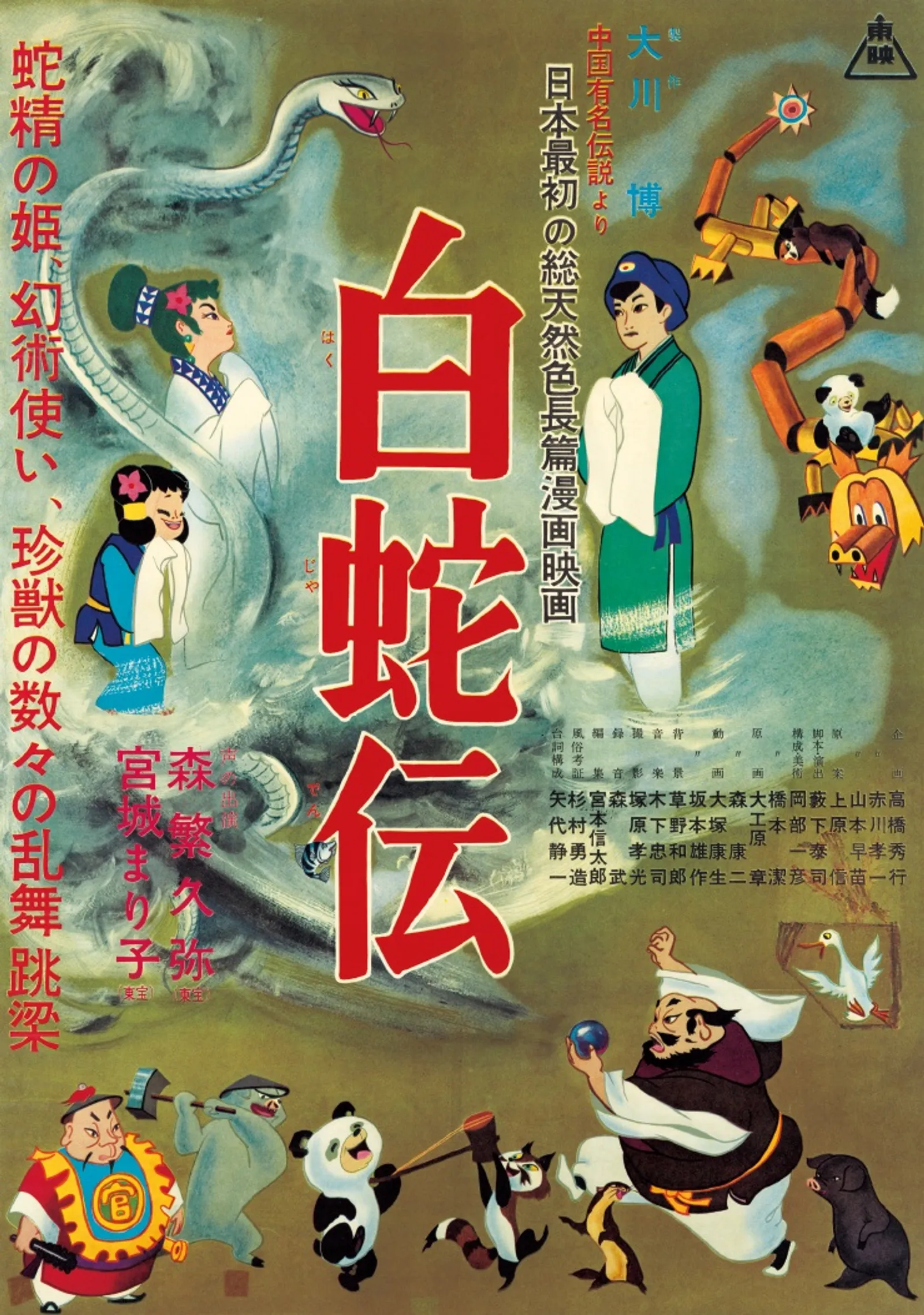Legend of the White Serpent (白蛇伝)(1958) (1958)
Filed under: Animation, 1950s, Japan, Technicolor, Toei Animation Studio,
Legend of the White Serpent (白蛇伝)(1958)
 Directed by:
Producers:
Directed by:
Producers:Hiroshi Ôkawa
Music by:Chuji Kinoshita
Hajime Kaburagi
Masayoshi Ikeda
Toei Animation Studio
Release date:22/10/1958
Running time:3 minutes (clip), 78 minutes (full length)
Color process:Technicolor
Synopsis
Legend of the White Serpent, also known as Hakujaden (白蛇伝), is the first feature-length animation produced by Toei Animation in Japan. Inspired by classical Chinese folklore, Hakujaden is a romantic tale of a white snake demon, Bai Niang, and a mortal man, Hsu-Hsien, whose union was disrupted by a monk, Fa Hai. The selected clip shows the magical combat between Bai Niang and Fa Hai derived from Flooding of Jinshan Temple (水漫金山), one of the most well-known episodes of the original folklore when Bai Niang conjured a huge flood over the Temple of Jinshan, where Fa Hai served as the host, in hope of propelling the monk to release her husband, yet failed the contest and was imprisoned under a Buddhist pagoda.
Hakujaden initially aimed to appeal to the Chinese audience through its selection of Chinese folklore but failed to do so (Hu 90). Toei first approached Hong Kong filmmakers in hope of a co-production over the animation but was forced to withdraw due to divergent interpretations of the thematic message of the story, which was very noticeable in Hakujaden’s final version (Ibid.). Toei’s adaptation was in stark contrast to the tragic ending of the original folklore, where the mentally and physically weak Hsu-Hsien betrayed Bai Niang in fear of her true identity as a snake demon, and Fa Hai, who practiced celibacy, was unable to understand but disrupted the romance that Bai Niang pursued. Hakujaden, however, portrayed Hsu-Hsien as heroic by rescuing Bai Niang, who turned into a stereotypical, vulnerable female love interest, from a sea storm (Ibid. 88). Fa Hai, under this context, eventually realized the cross-racial true love by sending his wishes to the couple, as understandable if knowing Japanese monks are permitted for marriage. Such a happily-ever-after conclusion was influenced by contemporary Disney animated films popular in Japan, as well as a result of Toei as the first Japanese large-scale studio which proposed to produce animated features equivalent to the works of Disney (Hu 28).
Hakujaden‘s poor popularity in East and Southeast Asian countries can be attributed to the limited or restricted access to Japanese films in countries with large Chinese populations, who have not yet fully recovered from the colonial memory of imperialist Japan’s wrongdoing during the Second World War (Ibid. 84). However, the film helped Toei to rise to prominence in the west (Ibid. 83).
References:
Hu, Tze-yue G., and Masao Yokota, editors. Japanese Animation : East Asian Perspectives. University Press of Mississippi, 2013.
Hu, Tze-Yue G. “Postwar Japanese Animation Development and Toei Animation Studio.” Frames of Anime, Hong Kong University Press, HKU, 2010, pp. 77-103, https://doi.org/10.5790/hongkong/9789622090972.003.0006.
